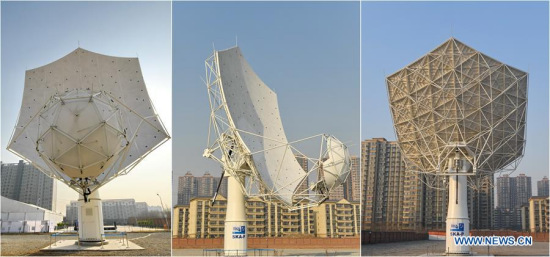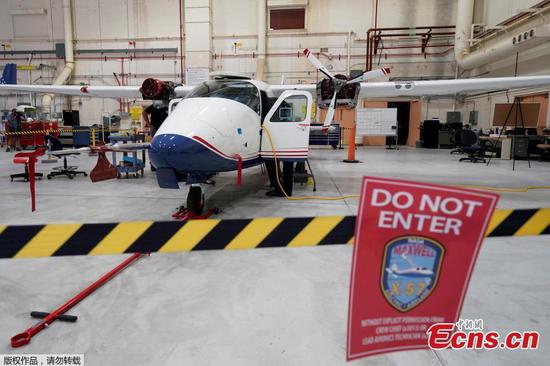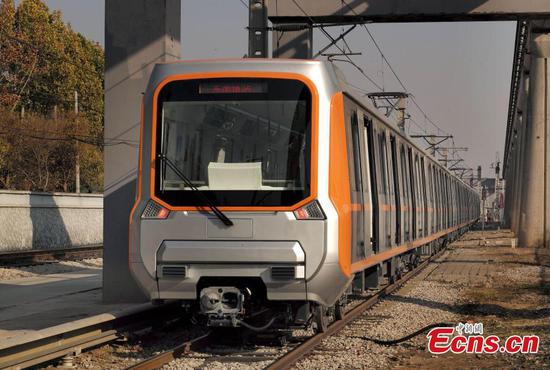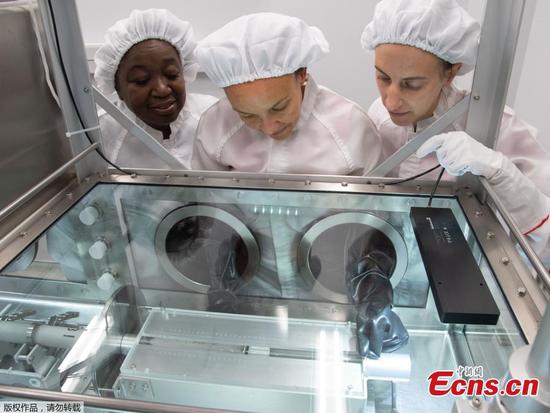
Combined photo taken on Feb. 6, 2018 shows the frontage (L), sideview (C) and the backside of the prototype dish for Square Kilometer Array (SKA) radio telescope. (Xinhua/Mu Yu)
Chinese scientists have developed the first regional center prototype of the Square Kilometre Array (SKA), the world's largest astronomical device.
The prototype, developed by the Shanghai Astronomical Observatory (SHAO) with the support of the Ministry of Science and Technology and the Chinese Academy of Sciences, will help advance the construction and operation of the future SKA regional center, said An Tao, head of the SKA group of the SHAO.
An article introducing the prototype was published in the latest issue of the academic journal Nature Astronomy.
The SKA will be the largest and most advanced radio telescope ever built. It will combine signals received via thousands of small antennae spreading over 3,000 km to simulate a single giant radio telescope with a total collecting area of approximately one square kilometer.
The antennae will be installed in the southern hemisphere with the core stations located in Western Australia and South Africa, offering the best view of the Milky Way and the least radio frequency interference.
The SKA will be able to detect faint radio waves from deep space with its sensitivity about 50 times higher than any other existing radio instrument ever developed.
Scientists will use the super telescope to study the evolution of the universe, understand the nature of gravity, explore the origins of life and the origins of cosmic magnetic fields, as well as search for extraterrestrial civilization. The SKA is expected to make revolutionary breakthroughs in the major frontiers of natural sciences.
It will also produce the largest data flow ever seen in astronomy. Just the first phase of the SKA, accounting for only 10 percent of the full scale, will create data products with a growth rate of one exabyte per year once operational, requiring a computing capacity of at least 300 petaflops, according to An.
The vast volume of the SKA data and diverse locations of science users require a coordinated network of geographically distributed SKA regional centers, said An.
The construction of the SKA is planned to start next year, and China, one of the founding members, is investigating the China regional center scheme, which will offer a platform for multi-disciplinary scientific research, in-depth data processing, long-term storage and advanced technique development, An said.
He said the prototype is designed to provide scientists worldwide with necessary computing resources, high-quality data products and convenient technical support to conduct SKA early science and to understand the data challenges.
The commissioning of the prototype is expected to take place in 2020. The pioneering work and practical operational experience of the prototype will be valuable for improving the design and future large-scale expansion of SKA regional centers, he added.


















































